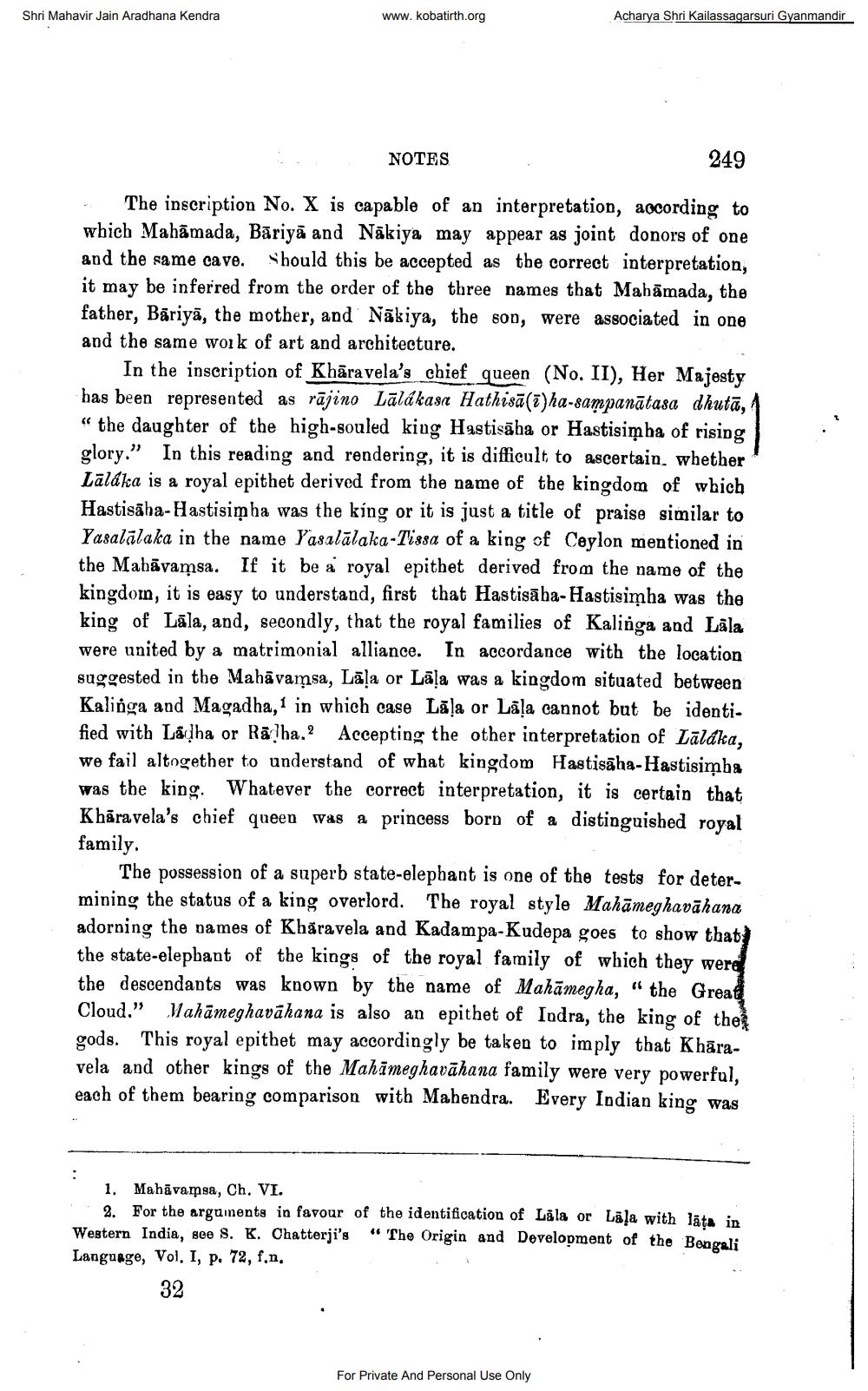________________
Shri Mahavir Jain Aradhana Kendra
www.kobatirth.org
Acharya Shri Kailassagarsuri Gyanmandir
NOTES
249
The inscription No. X is capable of an interpretation, aocording to which Mahāmada, Bāriyā and Nākiya may appear as joint donors of one and the same cave. Should this be accepted as the correct interpretation, it may be inferred from the order of the three names that Mabāmada, the father, Bāriyā, the mother, and Nākiya, the son, were associated in one and the same work of art and architecture.
In the inscription of Khāravela's chief queen (No. II), Her Majesty has been represented as rājino Lālákasa Hathisā(ī) ha-sampanātasa dhuta, 1 " the daughter of the high-souled king Hastisāha or Hastisimba of rising glory.” In this reading and rendering, it is difficult to ascertain, whether Lāláka is a royal epithet derived from the name of the kingdom of which Hastisāba-Hastisimha was the king or it is just a title of praise similar to Yasalālaka in the name Yasalālaka-Tissa of a king of Ceylon mentioned in the Mahāvamsa. If it be a royal epithet derived from the name of the kingdom, it is easy to understand, first that Hastisāba- Hastisimha was the king of Lāla, and, secondly, that the royal families of Kalinga and Lāla were united by a matrimonial alliance. In accordance with the location suggested in the Mahāvamsa, Lāla or Lāla was a kingdom situated between Kalinga and Magadha, 1 in which case Lāļa or Lāļa cannot but be identified with Ladha or Ra lha.? Accepting the other interpretation of Lāldka, we fail altogether to understand of what kingdom Hastisāha-Hastisimba was the king. Whatever the correct interpretation, it is certain that Khāravela's chief queen was a princess born of a distinguished royal family.
The possession of a superb state-elephant is one of the tests for determining the status of a king overlord. The royal style Mahāmeghavāhana adorning the names of Khåravela and Kadampa-Kudepa goes to show that) the state-elephant of the kings of the royal family of which they were the descendants was known by the name of Mahāmegha, " the Gread Cloud.” Mahāmeghavāhana is also an epithet of Indra, the king of the gods. This royal epithet may accordingly be taken to imply that Khāravela and other kings of the Mahāmeghavāhana family were very powerful, each of them bearing comparison with Mahendra. Every Indian king was
1. Mahāvamsa, Ch. VI.
2. For the arguments in favour of the identification of Lāla or Lāla with lata in Western India, see S. K. Chatterji's “The Origin and Development of the Bengali Language, Vol. I, p. 72, f.n.
32
For Private And Personal Use Only




